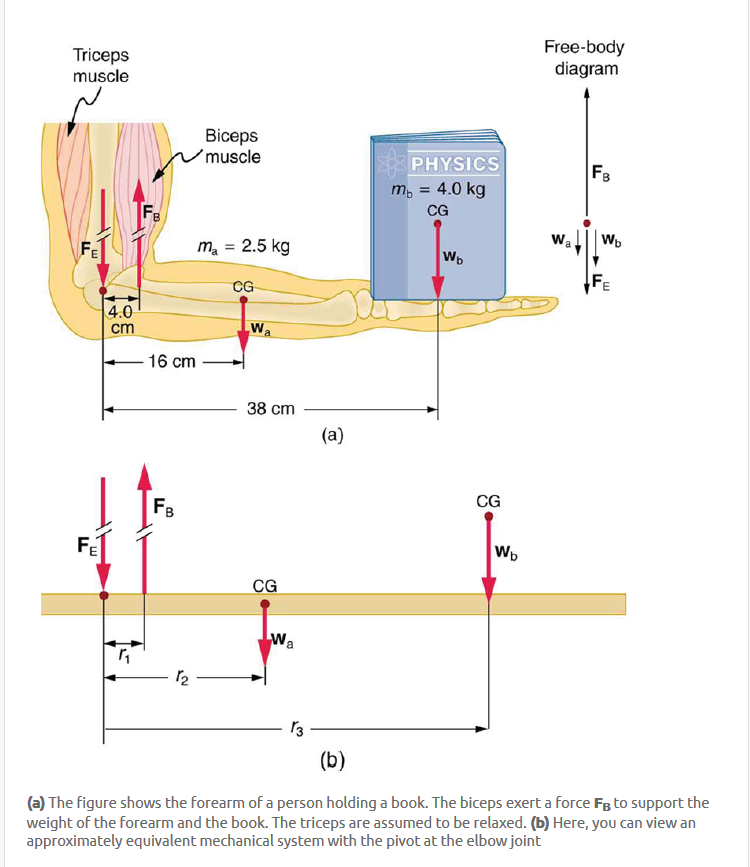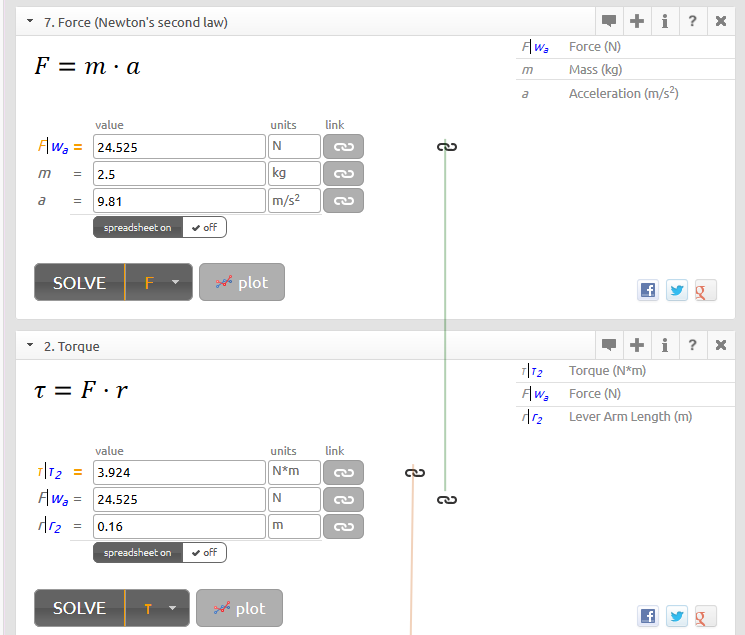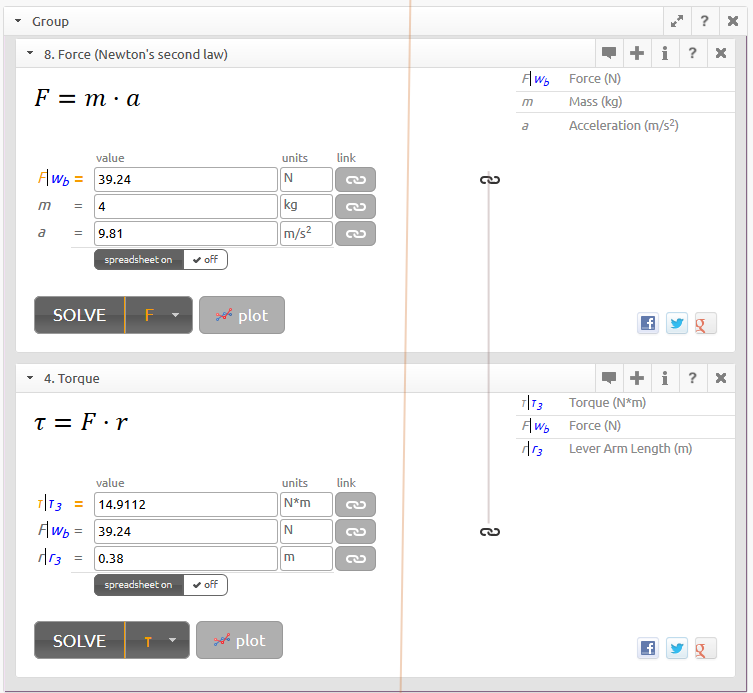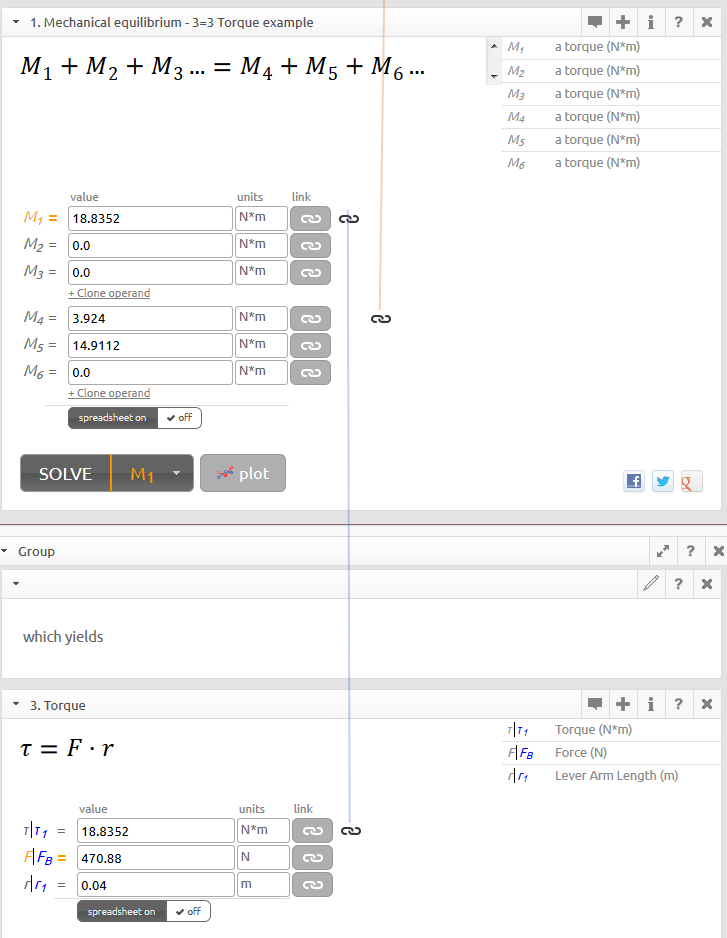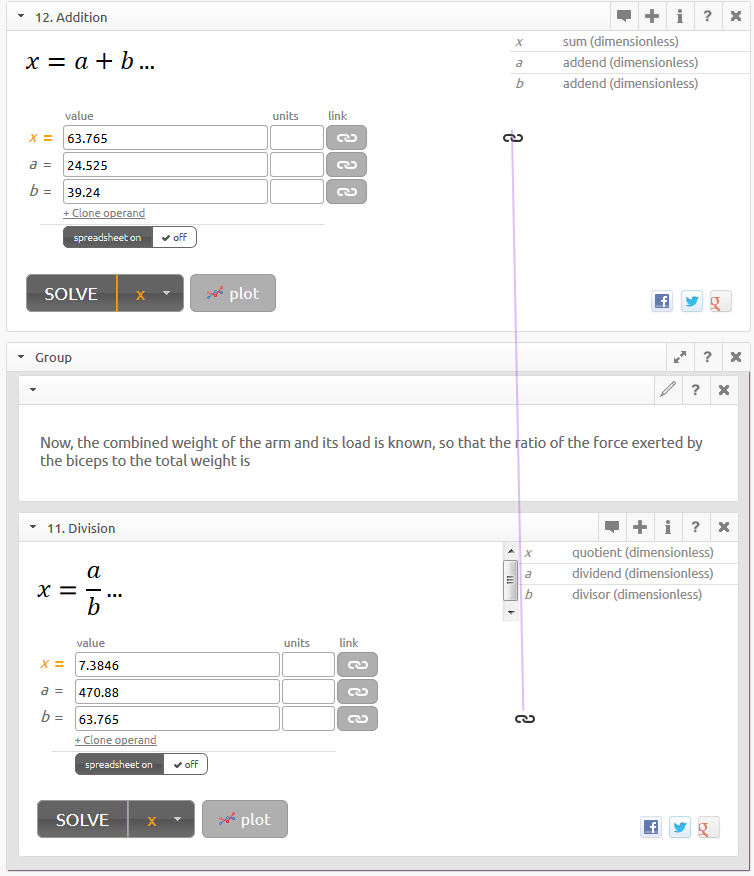About a month ago, we discussed bones and equations. Today we are talking muscles.
A new high tech accessory surfaced lately. It is an armband that promises that will make you control everything with your hand gestures. Pretty much like Tom Cruise in Minority report, but even cooler.
The basic principle is that while you wear this arm pad, it reads your muscle movement and electrical activity and translate it into “orders” for your computer or Smartphone.
Searching the fxSolver’s database for the keyword “muscle”, I bumped on this very interesting worksheet.
We want to calculate the force the biceps muscle must exert to hold the forearm and its load as shown in the figure below, and compare this force with the weight of the forearm plus its load. You may take the data in the figure to be accurate to three significant figures.
Strategy:
There are four forces acting on the forearm and its load (the system of interest). The magnitude of the force of the biceps is FB, that of the elbow joint is FE, that of the weights of the forearm is wa , and its load is wb. Two of these are unknown FB, so that the first condition for equilibrium cannot by itself yield FB . But if we use the second condition and choose the pivot to be at the elbow, then the torque due to FE is zero, and the only unknown becomes FB .
The Solution :
The torques created by the weights are clockwise relative to the pivot, while the torque created by the biceps is counterclockwise; thus, the second condition for equilibrium (net τ=0) becomes…
Note that sin θ = 1 for all forces, since θ = 90º for all forces. This equation can easily be solved for FB in terms of known quantities,yielding. Entering the known values gives
This means that the biceps muscle is exerting a force 7.38 times the weight supported.
Awesome right?
Go ahead, check other worksheets, or make your own. It is very handy and useful. You will find some help in our fxSolver video.
Also remember to follow or interact with us in our social media pages. You will find links below.

